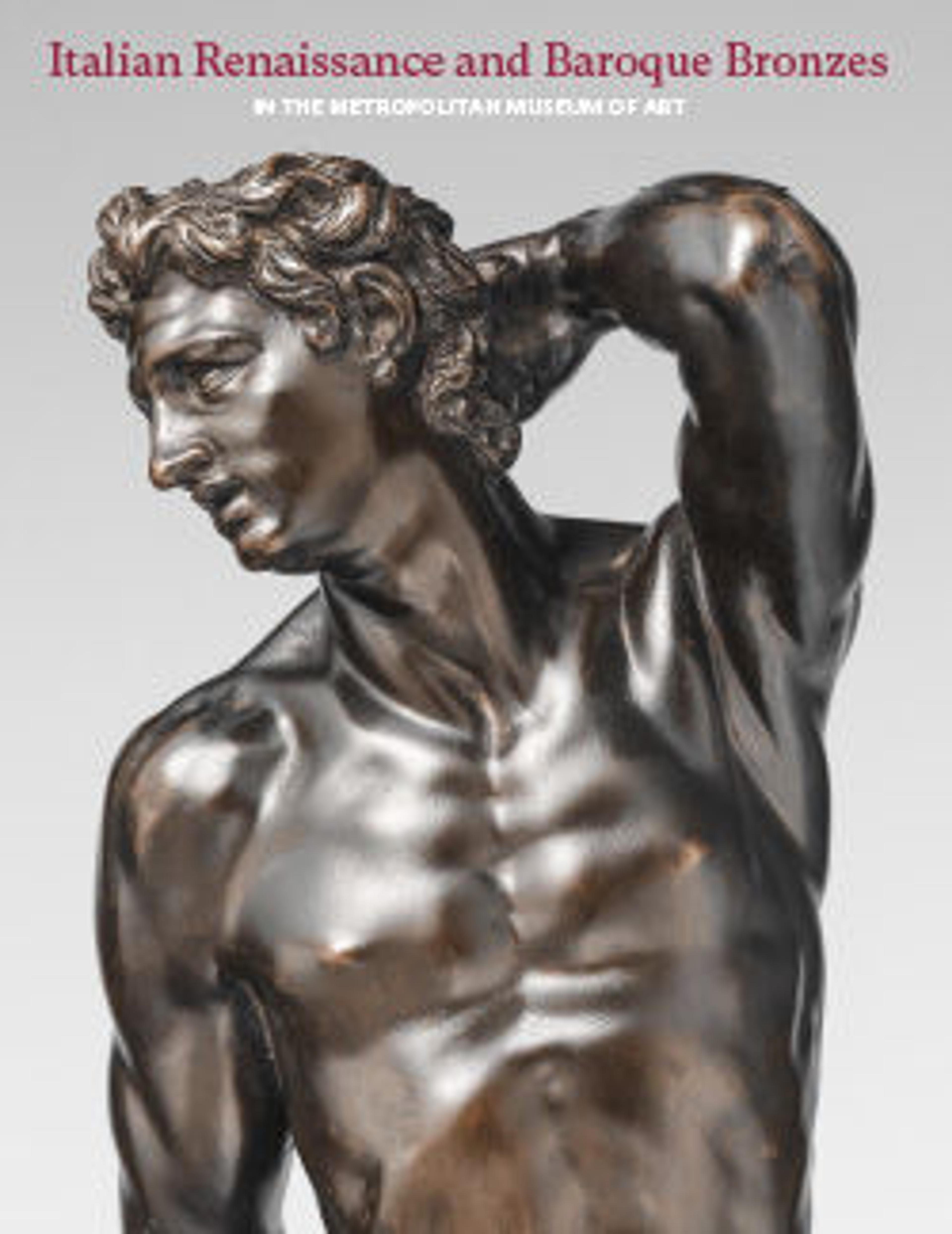Venus Marina
The composition derives from an over-lifesize statue of Istrian stone on the balustrade of the Libreria Marciana in Venice, executed by Girolamo Campagna between 1588 and 1590 (p. 00, fig. 75a).[1] This statue and the many other monumental sculptures created by Campagna and his contemporaries for the library balustrade were obviously considered free-use models and were replicated as small bronzes in various sizes and with varying degrees of faithfulness by different private foundries in Venice over a long period. Since these bronzes are based on the designs of the leading sculptors of the sixteenth century, they can be very appealing even when the execution is not of high quality. They were rapidly produced mass commodities used mostly as the surmounting figures of firedogs and other utilitarian objects. To facilitate production, the statuettes were often cast from already existing bronzes, as in this case, which seems to be the after-cast of an after-cast.[2] The present bronze is technically more expert than cat. 75, but the rote appearance and the “cleaner” alloy speak for a later date of manufacture. As pointed out by Peta Motture, old models were reproduced in Venice during the nineteenth century at foundries such as those run by Angelo Giordani, Michelangelo Guggenheim, and Giuseppe Michieli.[3] It is therefore virtually impossible to say when Venetian bronzes such as this Venus Marina were made.
-CKG
Footnotes
(For key to shortened references see bibliography in Allen, Italian Renaissance and Baroque Bronzes in The Metropolitan Museum of Art. NY: The Metropolitan Museum of Art, 2022.)
1. See cat. 75, note 1.
2. R. Stone/TR, June 17, 2009.
3. Motture 2003, p. 291.
-CKG
Footnotes
(For key to shortened references see bibliography in Allen, Italian Renaissance and Baroque Bronzes in The Metropolitan Museum of Art. NY: The Metropolitan Museum of Art, 2022.)
1. See cat. 75, note 1.
2. R. Stone/TR, June 17, 2009.
3. Motture 2003, p. 291.
Artwork Details
- Title: Venus Marina
- Artist: After a model by Girolamo Campagna (Italian, Verona 1549–1625 Venice)
- Date: late 16th century?
- Culture: Italian, Venice
- Medium: Bronze
- Dimensions: Overall confirmed: 16 3/8 × 5 1/2 × 4 1/2 in. (41.6 × 14 × 11.4 cm)
- Classification: Sculpture-Bronze
- Credit Line: Rogers Fund, 1940
- Object Number: 40.14.7
- Curatorial Department: European Sculpture and Decorative Arts
More Artwork
Research Resources
The Met provides unparalleled resources for research and welcomes an international community of students and scholars. The Met's Open Access API is where creators and researchers can connect to the The Met collection. Open Access data and public domain images are available for unrestricted commercial and noncommercial use without permission or fee.
To request images under copyright and other restrictions, please use this Image Request form.
Feedback
We continue to research and examine historical and cultural context for objects in The Met collection. If you have comments or questions about this object record, please contact us using the form below. The Museum looks forward to receiving your comments.
